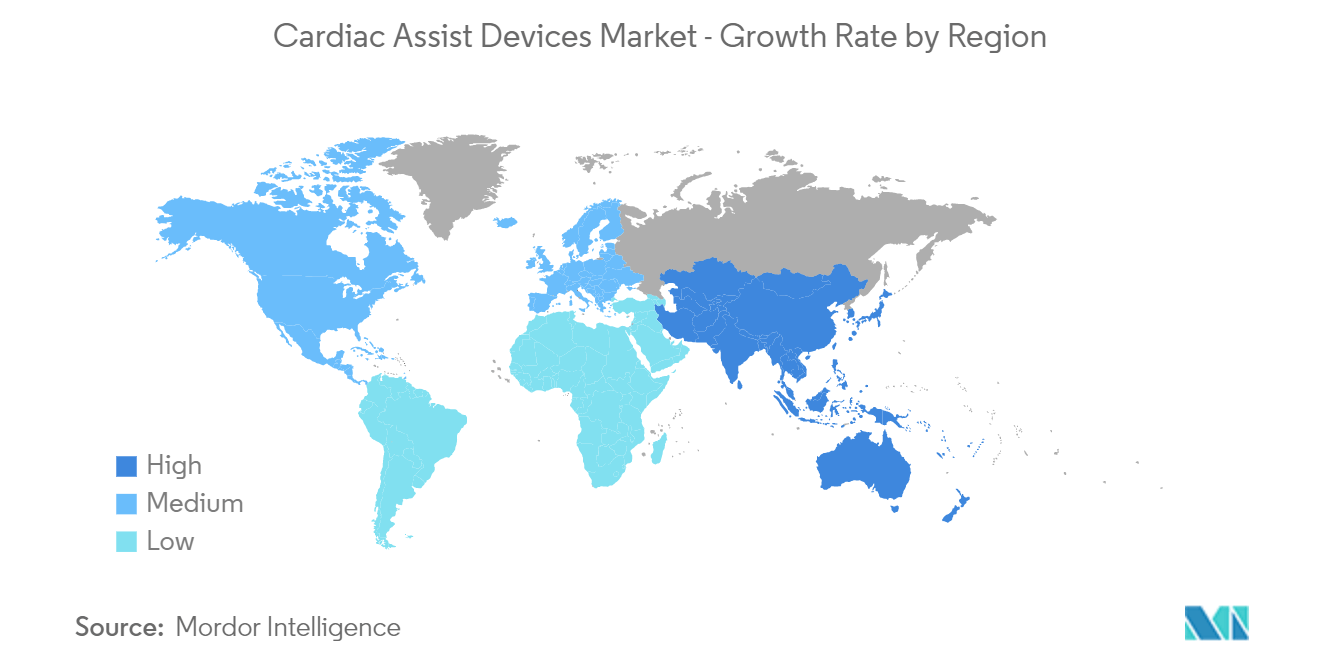Market Trends of Cardiac Assist Devices Industry
This section covers the major market trends shaping the Cardiac Assist Devices Market according to our research experts:
Total Artificial Heart Segment is Expected to Show Better Growth in the Forecast Period
The total artificial heart (TAH) is a form of mechanical circulatory support in which the patient's native ventricles and valves are explanted and replaced by a pneumatically powered artificial heart. Currently, the TAH is approved for use in end-stage biventricular heart failure as a bridge to heart transplantation.
According to a study published by the British Heart Foundation in January 2022, there were approximately 7.6 million people with heart disease in the United Kingdom, and nearly 160,000 deaths each year. An average of 460 fatalities each day, or one death every three minutes, happen in the United Kingdom due to CVDs. Due to the rising burden of cardiovascular diseases, there is an increasing demand for innovative technologies which can decrease the mortality rates associated with heart failure, thereby increasing the demand for total artificial heart devices during the study period.
The rising research and development studies highlighting the improved survival rates of cardiac patients will increase its adoption, thereby leading to lucrative growth of the market. For instance, according to the study published by The Journal of Heart and Lung Transplantation in March 2021, post-transplant of t-TAH (SynCardia Systems, Tucson, Arizona) survival was 88%, 84%, 79%, and 74% at six months, one year, two years, and five years, respectively, which is significantly high. Hence, technological innovations in the total artificial heart segment are expected to increase the survival rate, thus driving the market segment.
Also, the article published in June 2021 by Wolters Kluwer Health stated that the Carmat Total Artificial Heart (C-TAH) Auto-Mode with built-in pressure sensors effectively produced appropriate physiological responses reflective of changing patients' daily needs and, thus, provided almost physiological heart replacement therapy. Therefore, such technological innovations in the market segment will fuel its growth.
Thus, the rising burden of cardiovascular diseases, along with the increased product launches, is expected to boost the growth of the segment over the forecast period.

North America is Expected to Hold a Significant Share in the Market and Expected to do Same in the Forecast Period
North America is expected to dominate the overall market throughout the forecast period. The presence of high per capita healthcare expenditure, coupled with the rising prevalence of cardiac diseases, is expected to propel the high growth of cardiac assist devices in the North American region. In the North American region, the United States holds the largest share. This is due to the presence of a large population with heart disease. In the United States, cardiovascular diseases and hypertension cases account for a major share of the people that require surgery. For instance, The data updated by Cedars-Sinai in January 2022 shows that coronary artery bypass graft surgery (CABG), also known as coronary artery bypass, or bypass surgery, is the most common type of heart surgery, and more than 300,000 people have successful bypass surgery in the United States each year. In addition, according to the CDC, in the United States, the prevalence of atrial fibrillation is estimated to rise to 12.1 million by the year 2030. This shows a rising burden of cardiovascular diseases in the country, which is expected to demand Cardiac Assist Devices in the United States, driving the market growth.
The major factor driving the market is the rising burden of various coronary heart diseases, such as stroke and cardiomyopathy, which cause a global burden of cardiac-related deaths. As per a report by the United States CDC, statistics updated in 2021, every 40 seconds, an American may have a heart attack. This scenario leads to a higher demand for cardiac-assisted devices for better treatment, which will drive the market in the United States.
Furthermore, supportive awareness initiatives for disease awareness are projected to support the market for cardiovascular devices in North America. For instance, in March 2022, 10 Louisville-area heart failure patients received implanted mechanical pumps through Norton Heart & Vascular Institute's launch and certification of a ventricular assist device (VAD) program. Moreover, in July 2021, CARMAT announced the first implantation of its bioprosthetic artificial heart, Aeson, in the United States within the framework of the Early Feasibility Study (EFS).
Thus, owing to the abovementioned factors, such as the rising prevalence of cardiac diseases and increasing awareness, the North American region is expected to show lucrative growth over the forecast period.


